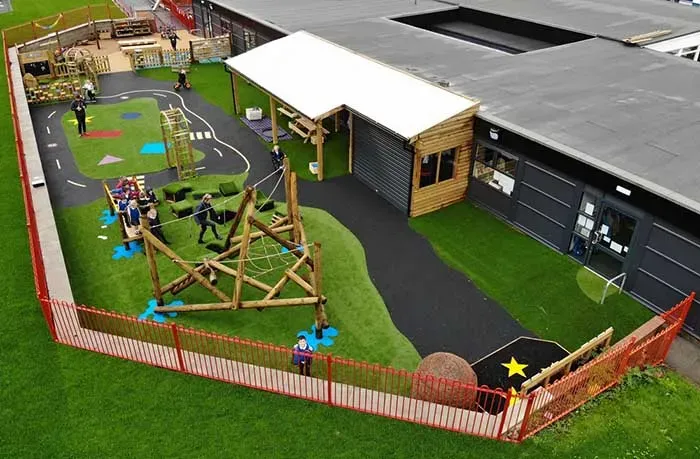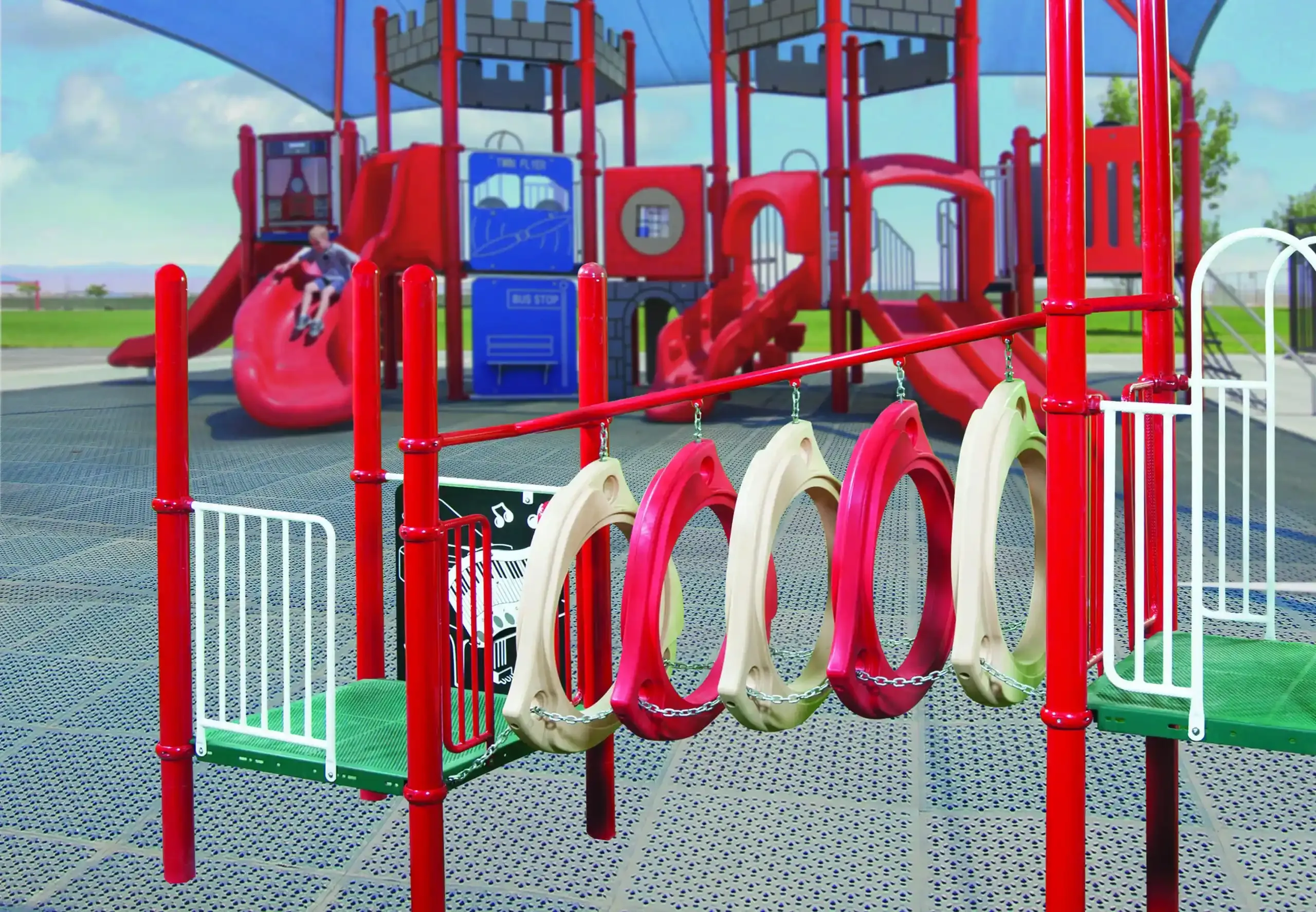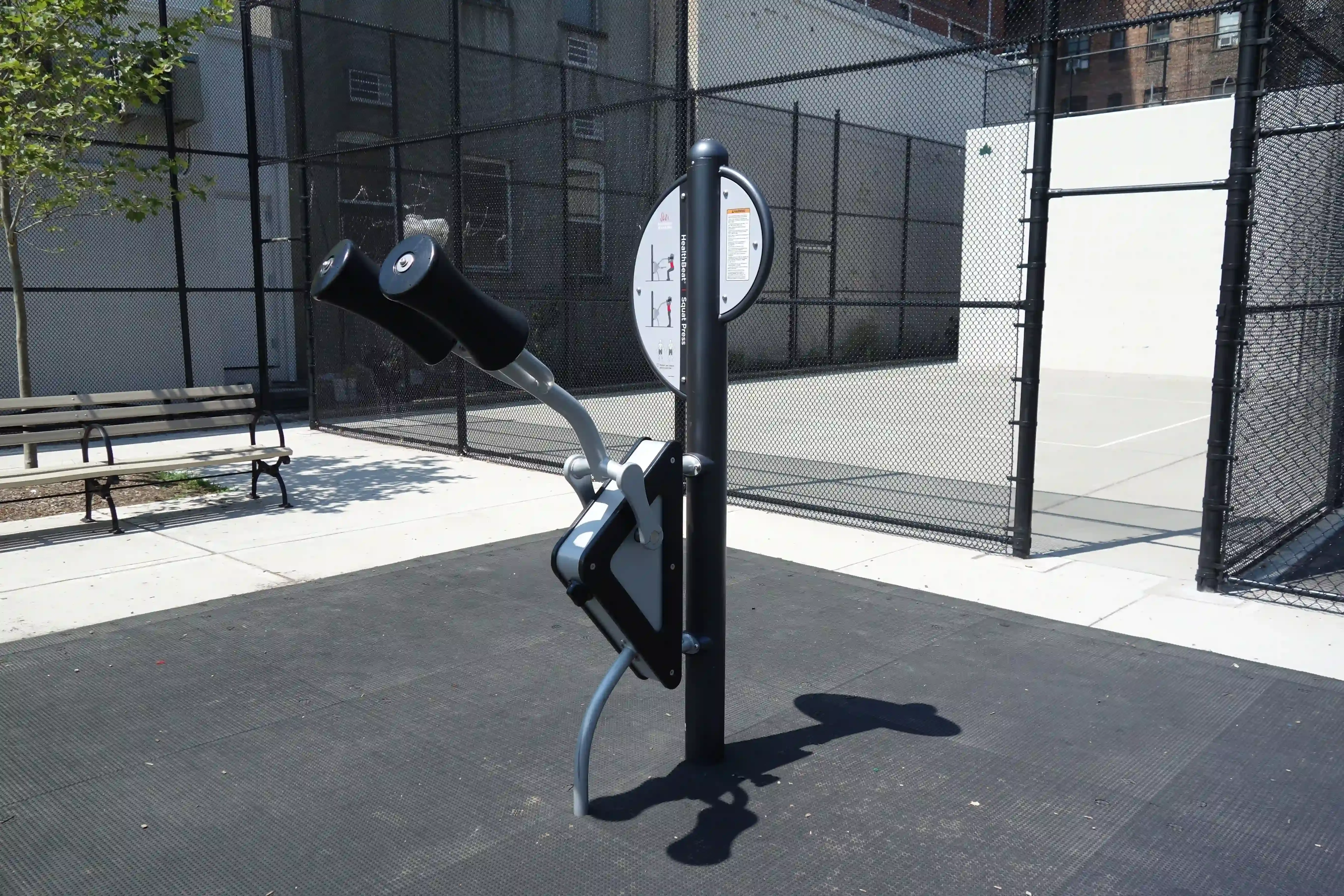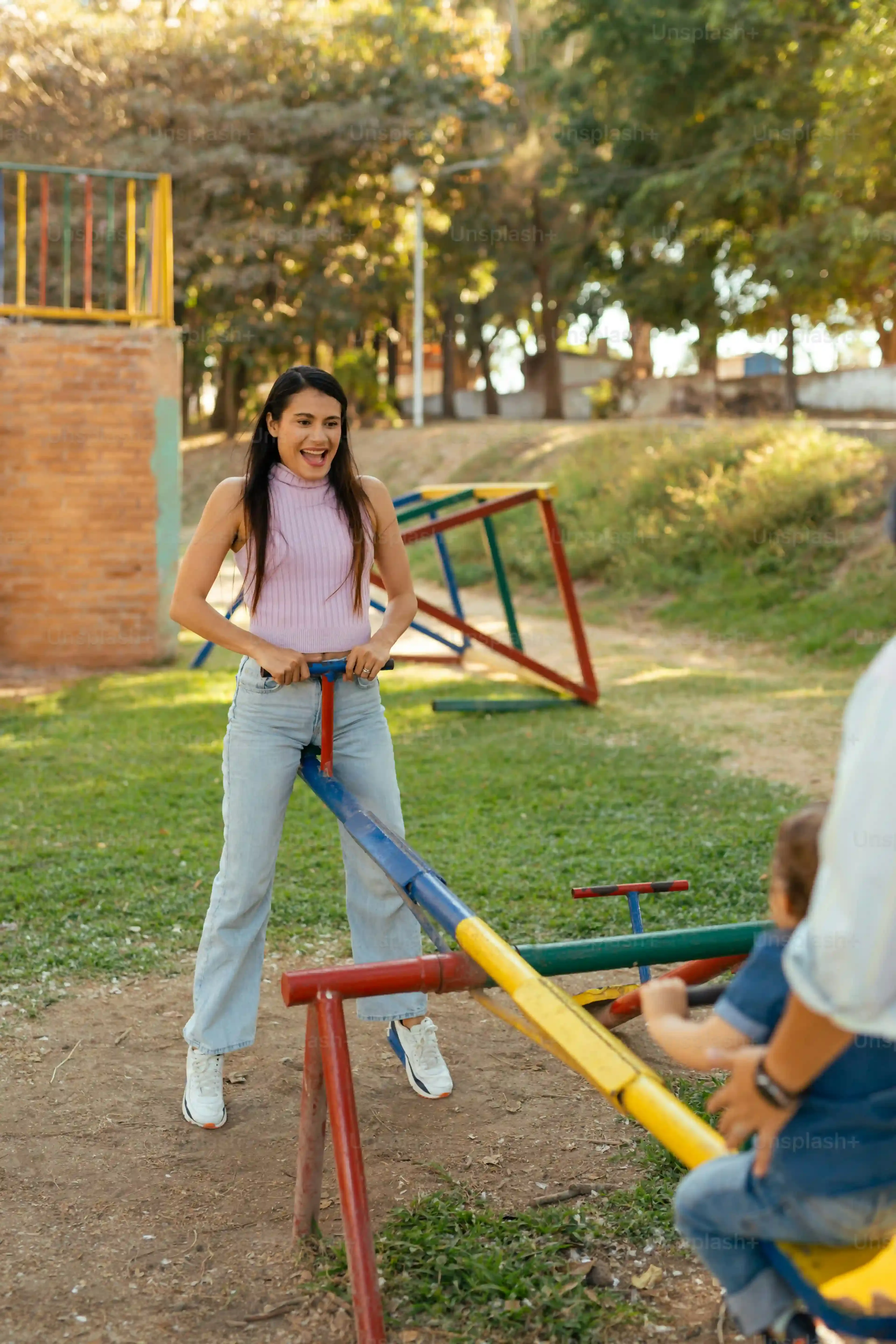Table of Contents
Remember recess? That burst of energy, the scramble for the swings, the sheer joy of just running around outside? For kids today, that time is more critical than ever. It’s not just about burning off steam; it's where significant physical, social, and cognitive development happens. And at the heart of that crucial outdoor experience in schools lies quality outdoor school playground equipment.
Why Outdoor School Playground Equipment Matters

Why Outdoor School Playground Equipment Matters
More Than Just Recess: Building Strong Bodies
Look, we all remember the pure chaos and joy of recess. But it’s not just a break from textbooks; it’s foundational. Quality outdoor school playground equipment is literally a gym class disguised as fun. Kids climb, they swing, they slide, they run. These actions build gross motor skills – coordination, balance, agility. They develop strength in muscles they might not use sitting at a desk. It’s where they figure out what their bodies can do, pushing limits safely (hopefully!).
Think about it: how else do you get a whole class working on upper body strength and spatial awareness simultaneously without them even realizing they're learning? A climbing structure does that. Swings work core muscles and timing. Open spaces near slides encourage running and chasing games. This isn't just about tiring them out; it's about physical literacy, setting habits for an active life that go way beyond the school gates.
Boosting Brains and Buddying Up: Social and Cognitive Gains
Beyond the physical, outdoor school playground equipment is a social and cognitive powerhouse. When kids are navigating monkey bars or deciding who goes first on the slide, they're practicing negotiation, cooperation, and conflict resolution in real-time. They learn to share space, take turns, and understand different perspectives. It’s messy, it’s loud, and it's crucial for social development.
Plus, unstructured play sparks creativity and problem-solving. A simple set of bars can become a pirate ship, a castle wall, or a spaceship console. Kids invent games, set rules, and work together to achieve a common goal – like building the ultimate sandcastle or creating a complex tag game. This kind of imaginative play, often fueled by the structures available, is vital for cognitive flexibility and critical thinking.
So, considering all these benefits, ask yourself:
- Is our current equipment meeting these needs?
- Are we providing enough variety for different ages and abilities?
- Could better equipment unlock more potential in our students?
Key Features of Quality Outdoor School Playground Equipment

Key Features of Quality Outdoor School Playground Equipment
Built to Last (and Not Injure Anyone)
Let's be real, kids are tiny wrecking balls fueled by sugar and limitless energy. Quality outdoor school playground equipment needs to withstand constant assault from jumping, climbing, swinging, and whatever other creative methods they find to test its limits. That means materials matter – think heavy-duty steel that won't rust out in five years, durable plastics that resist UV rays and cracks, and fasteners that stay put no matter how much vibration they endure. But durability isn't just about saving maintenance costs; it's fundamentally about safety.
Sharp edges, pinch points, unstable structures – these are non-negotiable failures. Good equipment adheres strictly to safety standards like ASTM and CPSC guidelines. It has appropriate fall zones, correct spacing between bars, and surfaces designed to minimize injury from falls. You're not just buying metal and plastic; you're buying peace of mind, knowing that while scrapes and bruises are part of childhood, catastrophic failures shouldn't be.
Designed for Everyone, Not Just the Acrobat
A truly great piece of outdoor school playground equipment isn't just for the most athletic kid on the yard. It caters to a range of abilities and ages. Inclusive design is paramount. Can a child with mobility challenges access different parts of the structure? Are there sensory elements for kids who benefit from tactile or visual stimulation? Are there quieter zones for children who get overwhelmed?
Age appropriateness is also key. Equipment meant for kindergartners looks and functions differently than gear for middle schoolers. Height of platforms, complexity of climbing elements, size of swings – it all needs to align with the physical and developmental stage of the intended users. Providing options that challenge different skill levels ensures that more children are engaged and feel successful.
Consider the following questions when evaluating equipment:
- Does it comply with current safety standards (ASTM, CPSC)?
- Is the primary material rust-resistant and durable?
- Does it offer accessible play opportunities for children with disabilities?
- Are there elements suitable for different age groups within the target range?
- What is the expected lifespan of the equipment under heavy use?
Sparks Imagination and Movement
Beyond safety and accessibility, quality outdoor school playground equipment needs to be *fun*. It should invite kids to move in diverse ways – climbing, balancing, sliding, spinning, hanging. Think about equipment that offers multiple pathways and uses, encouraging creative play scenarios. A structure that can be a fort today and a spaceship tomorrow holds attention longer than a static piece with only one function.
Look for elements that engage different senses and motor skills simultaneously. Monkey bars build upper body strength and coordination. Balance beams improve proprioception. Slides provide a thrilling descent (and maybe a little sensory input). Equipment that encourages social interaction, like multi-user swings or climbing nets, also adds significant play value. The best pieces are those that children return to again and again, finding new ways to play each time.
Selecting the Right Outdoor School Playground Equipment for Your Space

Selecting the Right Outdoor School Playground Equipment for Your Space
Assess Your Space and Student Needs
Alright, so you're sold on the idea that outdoor school playground equipment isn't just fancy junk. Now comes the fun part: figuring out what actually fits and makes sense for *your* school. First up, get outside and look at the space you've got. We're talking square footage, sure, but also the shape, the slope, existing trees, and drainage. You don't want to drop a massive structure where water pools like a swamp every time it drizzles. Think about the age range of the kids using it – are we talking tiny tots, awkward middle schoolers, or a mix? Because a structure perfect for six-year-olds will bore or even be unsafe for fourteen-year-olds, and vice versa.
Consider the number of students who will use the equipment simultaneously. A single slide isn't going to cut it for a hundred kids at recess. You need pieces with good play capacity, allowing multiple children to engage at once. Also, think about supervision sight lines. Can teachers easily see the entire play area from key points? Safety isn't just about the equipment itself; it's about the environment it's in and how it's monitored. Don't just pick something shiny; pick something smart for your specific situation.
Before you even look at catalogs, map out:
- Total available square footage
- Shape of the area (L-shaped? Long and narrow?)
- Any unmovable obstacles (trees, buildings, utility boxes)
- Natural features (slopes, drainage issues, sun exposure)
- Age groups and number of students using the space
- Existing playground equipment and its condition
Budgeting and Long-Term Value
let's talk money. Nobody has an unlimited budget for outdoor school playground equipment, no matter how much we wish we did. You need a realistic number, and then you need to figure out how to get the most bang for those precious bucks. Don't just look at the sticker price of the equipment itself. You've got to factor in installation costs (which can be substantial!), the cost of safety surfacing (critical, and not cheap), potential landscaping, and ongoing maintenance. A super-low price tag upfront might mean shoddy materials that require constant repairs down the line, costing you more in the long run.
Think of it as an investment, not just an expense. Quality equipment from reputable manufacturers might cost more initially, but it lasts longer, requires less maintenance, and meets higher safety standards. This saves you headaches and budget woes years from now. Look for warranties – a solid warranty indicates a manufacturer stands behind their product. Sometimes, phasing in equipment is smarter than trying to do everything at once with cheaper pieces. Get one or two really good, high-impact pieces now, and add more as funds become available. Prioritize pieces that offer high play value and serve the largest number of students effectively.
As the old saying goes, often attributed to various sources but always true in procurement: "The bitterness of poor quality remains long after the sweetness of low price is forgotten."
Maintaining Your Outdoor School Playground Equipment Investment

Maintaining Your Outdoor School Playground Equipment Investment
Regular Checks Keep Things Running (and Safe)
Look, buying outdoor school playground equipment isn't a one-time purchase you can just forget about. It’s like buying a car; you gotta do the oil changes if you don't want it to seize up. Regular, scheduled inspections are non-negotiable. We’re talking daily checks for obvious hazards like broken glass or litter, weekly checks for loose bolts or damaged parts, and monthly or quarterly in-depth inspections looking for wear and tear on moving parts, structural integrity issues, and surfacing problems.
Keep a logbook. Note what you checked, what you found, and what action was taken. This isn't just good practice; it's a critical part of risk management. If something goes wrong, you have documentation proving you were proactive. Simple stuff like tightening bolts or replacing a worn chain link early can prevent a minor issue from becoming a major (and expensive) repair or, worse, an accident.
Addressing Wear and Tear Before It Becomes Disaster
Things break. It’s the reality of equipment used by dozens, if not hundreds, of energetic kids daily. The key is catching wear and tear *before* it compromises safety or functionality. Swings get twisted, slides get scratched, paint chips, and hardware loosens. Don't wait for a piece to fail spectacularly. Train staff to spot potential issues during their supervision duties.
Have a process for reporting damage immediately. A wobbly handrail today is a fall hazard tomorrow. Chipped paint might expose rust that weakens the structure. Frayed ropes snap. Addressing these issues promptly isn't just about keeping the equipment looking good; it's about preventing injuries and extending the life of your significant investment in outdoor school playground equipment. Delaying repairs almost always costs more in the long run.
- Check bolts and fasteners for tightness.
- Inspect all moving parts (swings, spinners) for wear.
- Look for cracks, rust, or splinters on surfaces.
- Ensure all caps and plugs are in place on tubing.
- Examine protective barriers and guardrails for damage.
- Verify steps and platforms have non-slip surfaces.
Don't Forget the Ground You Stand On (Or Fall On)
The equipment itself is only half the equation; the safety surfacing beneath it is just as vital, if not more so. This stuff takes a beating – falls, weather, constant foot traffic. Loose-fill materials like wood chips or shredded rubber need regular raking and replenishment to maintain the required depth, especially under high-traffic areas like swing sets and slide exits. Compacted or displaced surfacing doesn't absorb impact properly.
Unitary surfaces like rubber tiles or poured-in-place material require checks for tears, cracks, or lifting edges that could cause tripping hazards or allow water underneath, leading to further damage. Ensure drainage is effective so water doesn't pool, which can degrade materials and create slip hazards. Maintaining the safety surfacing correctly is arguably the most critical aspect of preventing serious fall injuries on any outdoor school playground equipment.
Investing in More Than Just Equipment
Choosing and maintaining outdoor school playground equipment isn't just a facilities checklist item; it's a direct investment in the physical health, social skills, and imaginative capacity of students. The right pieces, thoughtfully selected and diligently cared for, become the backdrop for countless memories and crucial developmental leaps. It takes careful planning, understanding what truly makes equipment last and engage, and a commitment to ongoing upkeep. But the payoff – vibrant, active kids learning through play – is undeniably worth the effort. Think of it less as buying swings and slides, and more as cultivating a space where childhood thrives.